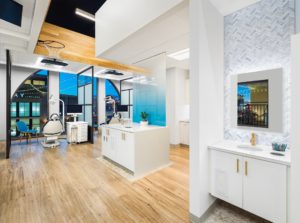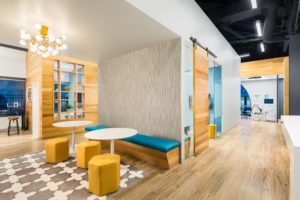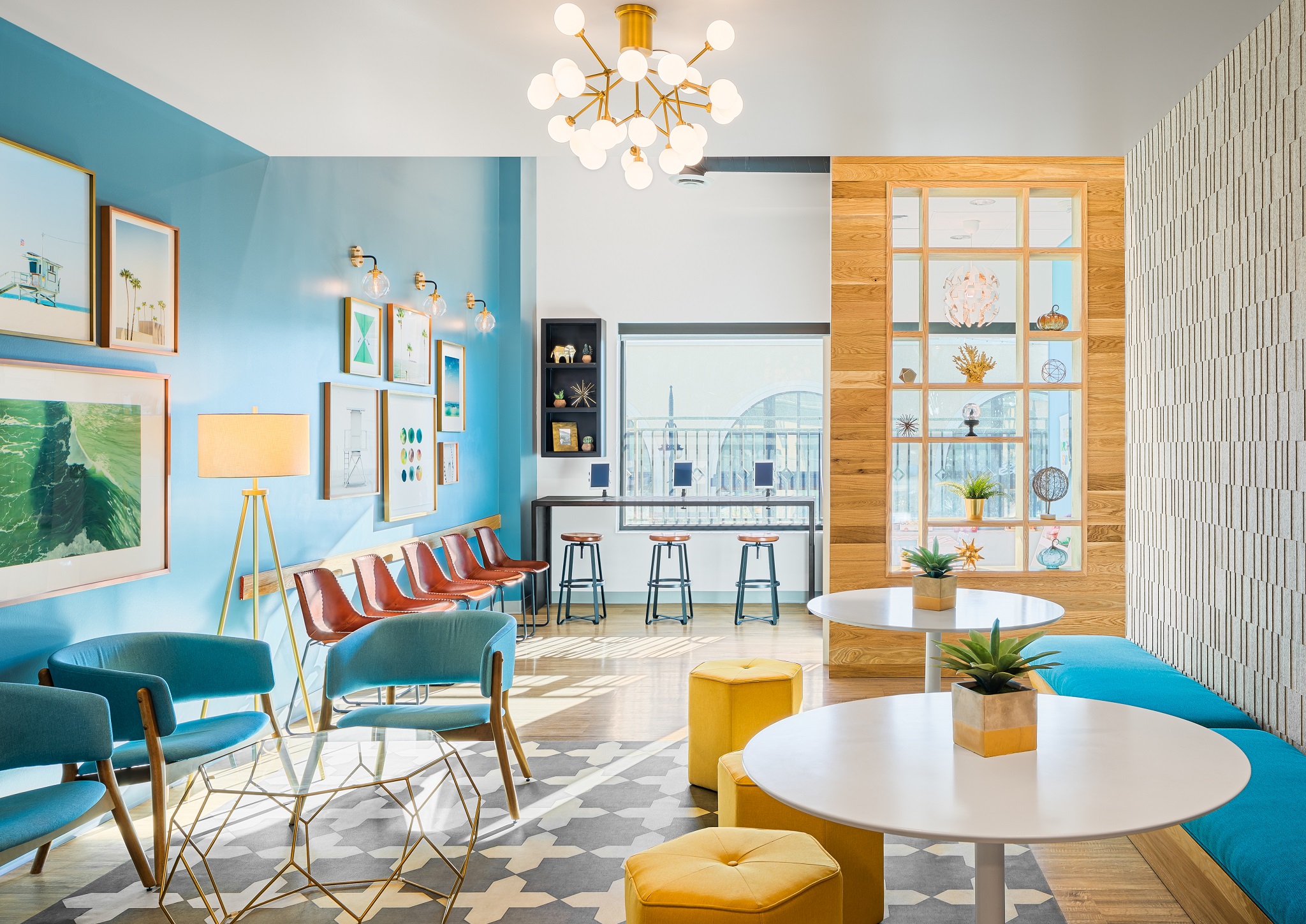What’s On The Inside Matters Too
In Part I and II of this article, we discussed the location, physical appearance, age, amenities, etc., of a building that impact a patient’s perception of a healthcare practice. These factors are otherwise known collectively as the “Class” of a building. Generally speaking, commercial buildings are categorized as a Class A, B, or C property.
We also reviewed that on a conscious and sub-conscious level, every patient is evaluating how much friction exists between getting what they want from a provider and what that provider is actually giving them (i.e. brand friction).
In our culture, it’s important to remember that your patient’s standards and expectations of brand excellence are defined by their favorite brands from which they frequent the most. These brands are going to be the market leaders in categories other than healthcare. The point being that as a healthcare provider, the competition for being measured against isn’t just the healthcare provider down the street, it’s brands like Apple, Nike, Amazon, Nordstrom, etc., that are delivering an excellent experience to your patient on a regular basis.

“There can be as much value in the blink of the eye as in months of rational analysis.”
– Malcolm Gladwell
Malcolm Gladwell’s insight into what a customer assesses in the blink of an eye is ever true in healthcare also. With this in mind, let’s examine additional real estate brand-factors that impact a patient.
What’s On The Inside Matters Too
Once a patient steps inside your building, the brand experience continues. If their experience outside was less than ideal, it can be overcome with a pleasant indoor environment. Ideally, there’s a positive branding continuum from the exterior all the way to the exam room.
12. Odors
Odors can trigger emotions, and it can be intense. Have you ever left a sandwich shop only to smell like a grilled Panini for the rest of your workday? Not a great residual experience. Something this simple can deter repeat business.
Some commercial buildings, particularly older Class C properties, have an unpleasant smell. Neighboring tenant odors can also bleed into a medical space and be a problem, like a Thai restaurant or sandwich shop for example. Don’t make the mistake of ignoring odors with regards to your brand, especially within your own office suite, and the common areas of your building.

13. Cleanliness
Messiness doesn’t offend everyone. But cleanliness offends no one. A clean and tidy commercial office speaks volumes about the occupant. The quality of janitorial services provided for common areas is just as important as in-suite janitorial.
Are the restroom’s waste receptacles overflowing with paper towels? Are the soap dispensers nearly always empty? Is the hallway paint scuffed and dirty? Are the corners and baseboards dusty? A patient with an eye for detail will notice these small details when they enter your space, interact at the reception desk and waiting room, and once they enter the main space and are waiting to be seen.
14. Directories
Does the common area directory look modern or is it dated? Is it in an obvious, noticeable location? Or is it difficult to find?
A high-class directory is a great compliment to an entryway. Surprisingly, some nicer B-Class buildings aim to get by with hand-written directory listings taped to a board or outdated cases with letters you push into a frame. Again, not everyone cares but this lack of excellence either adds to or subtracts from a brand and impacts a patient’s experience.
15. Flooring
Is the carpet modern and fresh or old and stained? What about the tile? Flooring is just as important as paint. And in medical buildings, both sterile and non-sterile environments must be accounted for in flooring design choices. The moment a patient walks into a space, they are observing the floors which communicate loudly as to cleanliness and sanitation of the practice.
16. Elevators
As mundane and brief as riding an elevator can be, they do have an emotional influence on people. One can experience a spectrum of emotions on an elevator, from feeling nothing at all to feeling social awkwardness, impatience, boredom, insecurity, even fear, or anxiety. The primary concern for an elevator should be its condition, namely does it feel old and unsafe or well maintained.

17. Artwork
Artwork on the walls, both in common areas and in office suites is not insignificant in creating experience. Wall hangings that look like they were salvaged from a Days Inn circa 1990, for example, will have a radically different impact on patients than stunning landscape photography on large formats that bring the outdoors inside.
18. Doors
As a reader, you’re probably thinking, “How could doors possibly affect my brand?” It may seem a stretch to think so, but they do. Understanding that patients are keeping an internal tab on all the things they like or dislike while at your office, doors do come into play.
For example, some people are germ-conscious everywhere they go. Do the restroom doors open in or out? Do you have to grab the handle, or can you do it with your foot? If your hand is required, is there a paper towel dispenser and trashcan next to the door for the germaphobes.
What about noise? Some people are highly sensitive to noise. Do the doors slam loudly in the hallway?
19. Furniture
Having furniture that is congruent with your brand is critical. Not just the look, but also the comfort. The type of healthcare practice plays into interior design choices in a major way. Hygiene and infection control obviously matter in a physician’s office. A white leather modern couch may work well in a med spa, but would be a total misfit in a pain management practice where the patient demographic may need more pain-friendly seating options.
20. Interior Finishes & Fixtures
The interior design of a building and an office collectively has the power to speak thousands of words. As noted throughout this article, there can be as much value in the blink of a patient’s eye as there is in months of rational thought (or months of advertising campaigns for that matter).
Entire businesses have been built around interior décor, finishes, and fixtures. Hotels and restaurants are a great example of this. The bar for a well-designed doctor’s office keeps rising as increasingly more practices are aiming for a competitive edge in delivering outstanding patient experiences.
21. Equipment
The list of equipment needed in healthcare is long: exam equipment, diagnostic equipment, millwork, furniture, lab equipment, electronics and technology equipment, emergency equipment, etc.
The equipment in an office integrates into the overall look and feel of the practice. Is it outdated? Is that obvious to a patient? Or is it the latest and greatest with a nice look and the best of features? All of this impacts patient-perception of the practice. And it impacts profitability, as the right piece of equipment can add hundreds of thousands in revenue.
In summary, remember that a patient can assess more about the practice in the blink of an eye than months of advertising, messaging, or rationalization. Make every effort to choose an office for your healthcare practice that raises the level of your brand and enhances the patient-experience. Doing so will result in happier patients and increased market dominance and profitability of the practice.
